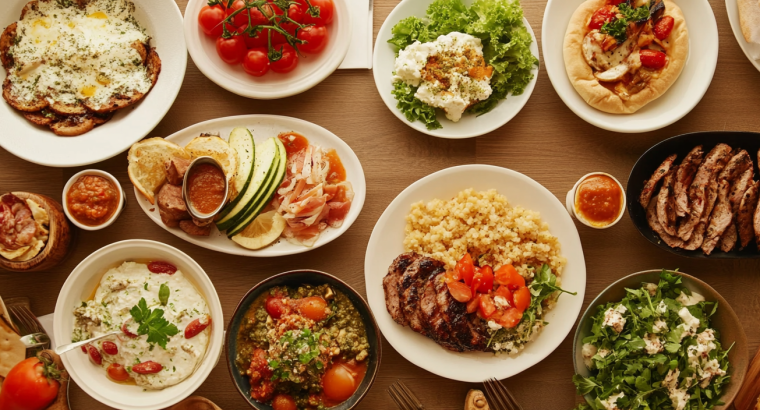Tips for Eating Out with Diabetes
Navigating the world of dining out when you have diabetes can be challenging. Whether you’re visiting a new restaurant or eating at a familiar spot, making meal choices that align with managing your blood sugar levels is key. However, with a bit of planning and some strategic tips, you can enjoy delicious meals without compromising your health. Here’s a comprehensive guide to help you eat out confidently while managing diabetes.
1. Plan Ahead
Doing a little research before you head out can make a world of difference. Many restaurants now have their menus available online, complete with nutritional information. Look up these resources beforehand to identify diabetes-friendly options.
- Check Menu for Options: Focus on menus that offer whole foods, such as salads, grilled meats, and steamed vegetables.
- Contact the Restaurant: For any uncertainties, don’t hesitate to call the restaurant and ask about how dishes are prepared.
- Identify Low-Carb Options: Look for dishes that naturally contain fewer carbohydrates to help maintain blood sugar levels.
2. Portion Control
Managing portion sizes is pivotal when eating out. Restaurants often serve larger portions than what’s typically necessary, which can lead to overeating.
- Share a Meal: Consider sharing an entree with a friend or family member. This not only helps with portion control but can also save money.
- Ask for a To-Go Box: When your meal arrives, immediately divide it into what you plan to eat and what you will take home.
- Choose Appetizers as Main Dishes: Sometimes, appetizers can be more reasonably portioned. Select a couple of appetizers instead of a heavy main course.
3. Make Informed Choices
Knowing what to look for in a menu can assist greatly in making diabetes-friendly selections.
- Focus on Grilled, Baked, or Steamed Options: These methods of cooking often mean less oil and fat, preserving the nutritional value.
- Avoid Fried and Breaded Foods: These are higher in carbs and unhealthy fats, which can spike blood sugar levels.
- Opt for Whole Grains: If breads and grains are part of your meal, choose whole grain or multi-grain options that offer more fiber.
4. Look Out for Hidden Sugars
Many seemingly healthy meals can be high in hidden sugars, which can quickly affect blood glucose.
- Be Wary of Sauces and Dressings: Request these on the side so you can control how much you use.
- Watch for Sugary Beverages: Stick to water, unsweetened tea, or coffee instead of sodas or juices.
- Ask for Fresh!: Request for fresh herbs, spices, and lemon to flavor your dishes instead of sugary or fatty sauces.
5. Don’t Skip the Protein
Including a good portion of protein can help stabilize your blood sugar levels by slowing the absorption of carbohydrates.
- Choose Lean Proteins: These include options like chicken, turkey, fish, and lean cuts of beef.
- Consider Plant-Based Proteins: Beans, lentils, and tofu make for great alternatives and provide plenty of fiber too.
6. Stay Mindful of Alcohol
Alcohol can affect blood sugar levels in unexpected ways, so it’s important to drink wisely.
- Limit Intake: Stick to one drink if having alcohol, and ensure you are also consuming food.
- Choose Low-Carb Options: Select drinks like dry wines or spirits mixed with zero-sugar mixers.
- Monitor Blood Sugar Levels: More importantly, ensure you have monitored your blood sugar levels before and after drinking.
7. Communicate with Your Dining Partner
Conversations with those you dine with can also help manage your diabetes lifestyle.
- Share Your Needs: Let your dining companions know what you need to consider regarding your meal choices.
- Support Each Other: If possible, surround yourself with friends and family who understand your health goals and can assist in keeping accountable.
8. Check Your Blood Sugar Levels Regularly
It’s vital to monitor your blood sugar before, during, and after eating out to understand how your meal choices affect your blood glucose.
- Carry Your Testing Kit: Always have your glucose meter with you so you can test when needed.
- Keep Treatment Handy: Bring any necessary medication or treatments along to manage unexpected spikes in glucose levels.
9. Be Prepared for Any Situation
Unexpected changes in plans can occur, but being prepared can make all the difference.
- Carry Snacks: Bring along diabetes-friendly snacks that are low in carbs and sugar, like nuts or a small piece of fruit.
- Have a Backup Plan: Identify alternative restaurants or meal choices in case your first choice doesn’t pan out.
10. Practice Balance and Moderation
Balance is the cornerstone of diabetes management, even when dining out.
- Indulge in Moderation: If you wish to have a small dessert, balance it out by choosing lighter options during the rest of your meal.
- Prioritize Your Comfort: Listen to your body and don’t force yourself to finish a meal if you are full.
Conclusion
Dining out with diabetes doesn’t mean you have to sacrifice flavor or fun. With these practical tips, enjoying a meal at your favorite restaurant can be a joyful and health-conscious experience. Through preparation, mindful choices, and effective communication, managing diabetes while dining out can become second nature. Remember, each restaurant experience is an opportunity to solidify these healthy habits and enjoy the company and ambiance around you. Whether you’re a seasoned pro or new to living with diabetes, these strategies are designed to empower you to dine with confidence and pleasure.

